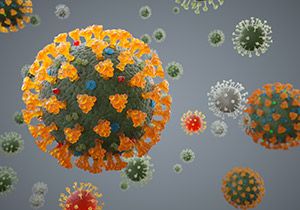Scientists discover bacteria can “see” like tiny eyeballs!
Scientists have finally explained how bacteria senses light…
The way the bacteria interpreted the light is just like that of a camera lens or a human eye.
Scientists have solved the mystery of how bacteria are able to sense light – their entire body acts like a mini-eyeball!
Professor Conrad Mullineaux and his team at Queen Mary University of London studied single-celled pond slime, known as cyanobacteria, to see how they reacted to light.
Scientists have long known that bacteria can sense light, but it wasn’t until now that they understood how they were doing it.
The team watched how the bacteria reacted to a laser, to determine how sensitive they were to light. They noticed that when one edge of a cell was exposed to light, their rounded shape focused the light onto the opposite side of the cell.
Watch the bacteria move toward the laser beam!
The microscopic creatures would then slowly shuffle in the opposite direction to that spot, heading toward the light – cool!
This lead the scientists to conclude that the tiny bacteria – which are only 0.003mm wide – “see” in a very similar way to how we do, by using their entire self to focus the light – like a tiny human eye or a mini camera lens.
When our eyes are presented with an image, they focus an upside down version onto the retina (a layer at the back of your eye). This study found that bacteria work in the same way, producing a much blurrier version. They then pull themselves towards the light using pili (tiny hairs on the outside of the cell).
“The idea that bacteria can see their world in basically the same way that we do is pretty exciting,” said Professor Conrad Mullineaux. “Spherical cyanobacteria are probably the world”s smallest and oldest example of a camera eye,” he said.
Spherical cyanobacteria has been around for a whopping 2.7 billion years, and scientists have been studying bacteria under microscopes for over 340 years, but it wasn’t until now that they solved the puzzle of how they see light.
Did you know that we have a FREE downloadable bacteria primary resource? Great for teachers, homeschoolers and parents alike, discover fascinating facts about the bacteria living on and inside our bodies…
What do you make of this new discovery? Let us know in a comment below!
More Like General Science

10 fascinating facts about hibernation

What is coronavirus?

BBC micro:bit – what’s it all about?











LEAVE A COMMENT
THANK YOU
Your comment will be checked and approved shortly.
WELL DONE,
YOUR COMMENT
HAS BEEN ADDED!
COMMENTS
cool
cool article super informative
So cool That is worth a lot to me as I like science a lot.
ccooooooooooolllllllllll!!!!!!!! but it is a bit weird
WOW!!!!!!!!!!!!!!
Fascinating, and can lead to other thinking, bacteria can do that, Does the same apply to temperature?
AMAZING
think how many bacteria are in your body, now think how many eyeballs are in your body. the tiny eyeballs are watching
wow,that is just SO COOL
Cool !
Wow! Thats really interesting!
Awesome!
amazing!
I hope Professor Conrad Mullineaux solves this bacterial mystery
CUSTOMIZE YOUR AVATAR